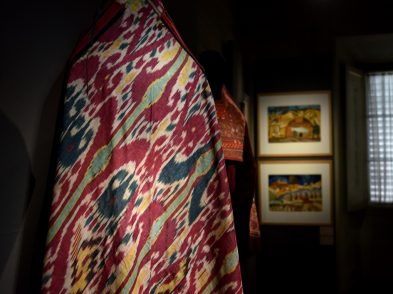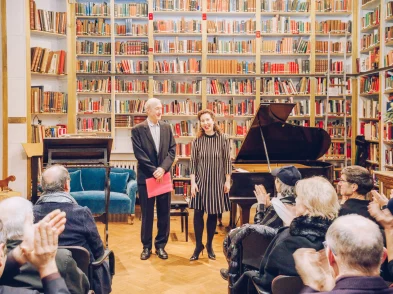It has been a long time since my last ‘Mosaics’. My lengthy leave of absence, however, was not a result of writer’s block. I was diagnosed with breast cancer, and in 2008 I was fighting for my life. As my doctor said, I was ‘cut (surgery), poisoned (chemotherapy) and burned (radiation)’ and when they’d finished, I was told ‘you’re well, again’…and I’m now raring to go. I’ve missed writing this column!
Last autumn, some readers may recall, I wrote about the restoration of Artemisia Gentileschi’s David and Bathsheba, which I funded along with the Florence Committee of the National Museum of Women in the Arts (see TF 91).
Gentileschi’s painting, originally thought to be stored in the Uffizi’s deposits, was finally rediscovered within the Pitti Palace. At present, there are more than 250 other un-exhibited works by women artists in Florence. Over the past four years, I’ve done extensive research for my book, ‘Invisible Women’, forthcoming from The Florentine Press, which spotlights work by women artists in Florentine museums, whether on display or in storage. Marco Badiani, executive director of The Florentine, calls me ‘Indiana Jane’ (I am from Indiana) for I’ve been honing my sleuthing skills, digging up lesser known works for ‘Invisible Women’.
David and Bathsheba, stored in Pitti’s soffittone for centuries, was in a state of considerable deterioration and decay. This exquisite masterpiece, created by one of the world’s most renowned woman artists, is on display in Pisa until July 19, 2009 as part of Galileo, Il Cannocchiale e Il Pennello, an interesting exhibit, featuring the genius of Galileo and his contemporaries, in Palazzo Blu (the façade of the building is actually blue), at Lungarno Gambacorti, 9. This recomposed work is truly precious! If you haven’t seen it yet, I urge you to visit Pisa before the exhibition closes.
When the painting returns to Florence, it will be relegated to the Sala del Letto in the Pitti Palace, which is not open to the public. The general public’s continued inability to view this painting on a long-term basis is a real ‘hot-button’ issue for me and perhaps merits lengthy debate in another Mosaics. Certainly, if a piece in storage is deemed worthy of restoration, why, once it is properly stabilized and restored, must it continue to be hidden from the public eye? Wall space in Florence is a critical problem, but returning a restored piece to the deposits is hardly justifiable!
So give some thought to a midsummer’s trip to Pisa. While you’re there, don’t miss seeing the 180-square-meter mural by the widely celebrated American artist Keith Haring (1958-1990), called Tuttomondo. Located on the exterior south wall of the Sant’Antonio Convent near Piazza Vittorio Emanuele, it features 30 figures, each representing a different aspect of peace. The human scissors stands for solidarity of man defeating evil (the serpent). A woman with a baby (my personal favorite) depicts maternity, and two men holding a dolphin represent man’s relationship with nature. A yellow figure, eye level to anyone who passes by, is none other than Haring interacting with the public. It took him only a week to produce the mural, and it is extraordinary!
And, of course, what would a trip to Pisa be without seeing the Tower that leans four meters to the south with a slant of over five degrees, caused by the soft subsoil? Many tomes have been written about the structure; thus I will limit myself to sharing a single little-known fact: its benefactor was a woman. In the year 1172, a widow from Pisa, Berta Di Bernardo, drew up a will in which she left ‘60 coins’ for the sole purpose of purchasing stone to build the tower. Construction began in 1173 and was stopped five years later, when it was only three stories high. Ninety-four years passed before construction was finally resumed in 1272. Officially completed in 1370, the tower was finished 197 years after the first stone had been laid. For a great book about its history, pick up Tilt, by Nicholas Shrady. Cut on an angle, the book tilts backwards when placed on a shelf.
We had a scrumptious lunch at Osteria La Mescita (via Domenico Cavalca, 2), which seats just 20 people. The food is a work of art in itself!








